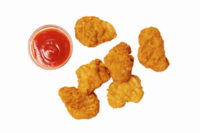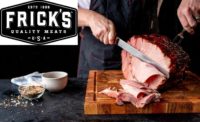Leveraging optimal technologies is perhaps the key variable in the operation of a successful precooked or smoked meats system. Processors with the most efficient and effective ovens and smokehouses are positioned to develop meats with superior flavor and texture that meet food safety standards.
Such technology also could help ensure product consistency, a crucial element if retailers and foodservice operators are to provide customers with the same eating experience at all times and locations.
To achieve those aims, a diverse base of processors is leveraging varying technologies and operating methodologies. Their disparate systems are designed in accordance with such factors as product lines, productions levels and manufacturing footprints.
But regardless of the size and scope of their operations, all processors should choose technologies that meet a number of crucial and common requirements, says Lynn Knipe, extension processed meat specialist at Ohio State University.
“It is important from a regulatory standpoint, or in the need to follow a HACCP plan, that meat producers are always cooking at the appropriate temperature,” he says. Yet without the proper ovens and smokehouses, processors are likely to have difficulty in maintaining the correct air circulation — and the uniformity of heat in ovens, Knipe notes.
Technologies that minimize the potential fallout from human error also are crucial.
“Even the way workers load ovens can affect consistency,” he says. “There are specific areas in an oven where air enters and exhausts. Anything that interrupts that circulation, such how the racks are loaded and how full they are, can cause issues.”
Consistency is the key
Manufacturers, however, are developing technologies that allow for more continuous and streamlined production and to ensure every product is cooked in a constant temperature. Systems that use casings or vacuum bags to reduce food safety issues also are becoming more prevalent.
“Processors are interested any time oven and smokehouse manufacturers take steps to reduce potential contamination and enhance product safety,” Knipe says. “Exposing meats to the environment can contaminate work surfaces. The chance of incidents is reduced when the end user receives products that were cooked in unopened packages.”
Some producers also are enhancing food safety by covering meats with casings that create a smoked flavor in lieu of operating smokehouses. Knipe notes that when placed in ovens, the casings generate the effect of more traditional smoking, including transferring color to products. The technique is being used more frequently on larger diameter deli items, such as bulk hams.
“It might not produce the exact flavor as a product that is traditionally smoked, and the color — which ranges from mahogany to a light brown — may not be as dark,” Knipe says. “But more food safety professionals are deciding that it is worth the sacrifice of a little quality to generate protection from Listeria.”
An assist from casings
A bigger trend, he says, is the adoption of technologies that create co-extruded items such as hot dogs, bratwursts and sausages that are cooked in packages. Salm Partners LLC, a Denmark, Wis.-based producer of sausages and hot dogs, leverages a collagen extrusion production system. The company reports its business was established in 2004 to “dramatically” implement new technologies.
A key operating procedure is spinning a fine collagen protein casing onto the surface of a sausage as it is being stuffed in order to preserve the textures and flavors.
During production, the company places blended meats with the oxygen removed into co-extrusion heads. Items are then cooked in packages to eliminate microbiological issues, says Chris Salm, Salm Partners’ CEO. The links are then kicked into baskets and brought by a continuous train into a drying tower.
Products are prepared for smoking after being conditioned in 175 to 180 degree Fahrenheit air and 4 percent humidity. The process uses liquid smoke that is designed to deliver the intended flavors, colors and textures, Salm says. Bending wheels then shape the sausages.
By putting the sausages in vacuum packages, Salm says the company seals in freshness and flavor while eliminating the threat of bacteria contamination. Cooking the meats in the absence of oxygen also eliminates the possibility of undesirable flavors being formed, he says, adding that it also is more energy efficient to cook products in water.
Salm says co-extrusion cooking technology eliminates pathogen and spoilage concerns, removes exposure to the environment after the cook and chill process, and extends the refrigerated shelf life of products by 50 percent to 150 days or longer.
Focus on high tech
North Country Smokehouse — a Claremont, N.H. producer of Applewood bacon, smoked hams, smoked turkey, sausage, chicken, duck and brisket — also is enhancing its production process with more sophisticated technologies, says president Mike Satzow. The company, which has three smokehouses and a cookhouse, uses computerized systems rather than standard timers to ensure greater cooking accuracy. Some units also have built-in chillers to enable products to cook and cool in the same vessel, which minimizes the potential for contamination.
“Listeria is what we are concerned about day and night,” Satzow says. “It has a put a lot of good companies out of business.”
Computer controls in smokehouses also better monitor airflow to regulate the smoke being generated. The equipment can run all night with minimal attention, he notes.
“It is important to get the right amount of smoke on each piece of bacon every day, as well as to control the humidity and drying,” Satzow says. “The computer makes it a lot easier to perform those tasks, but it still is important to have workers who buy into the concept that you are trying to make the best possible products.”
North Country Smokehouse has 34 employees, and Satzow says they must be passionate about ensuring that the smokehouses are running correctly.
“You can buy the world’s greatest equipment but still need to monitor the technology,” he says. “The smokehouses are only as good as the persons operating them. Such individuals need passion, experience and expertise. Consistency is crucial because business is only as good as the last batch of meats coming out of the smokehouse.”
North Country Smokehouse produces about 100,000 pounds of products a week for hotels, restaurants, airlines and upscale restaurant chains. Ensuring consistency also involves purchasing raw products from packers who have a history of offering top-quality meats, Satzow says. But the equipment remains perhaps the most crucial element.
“We use the modern technology not to make a faster or quicker product, but to get the ‘old-time’ flavors in the meats,” he says. “It includes oscillating fans that move air around at a much higher rate than most smokehouses to regulate the smoke and give us greater control over the product.”
The human factor remains
Also emphasizing the necessity for consistency is Tony Gahn Jr., president of Gahn Meat Co. Inc., a Milwaukee, Wis.-based producer of precooked beef, pork, lamb, veal and poultry for foodservice operators. He says his company focuses on technologies that are best-positioned to maintain quality levels.
“Fast-food operators, such as McDonald’s and Burger King, have created environments in which customers know they will end up with virtually the same product at any location,” he says. “It is important to provide independent operators with that same ability and that happens when we are able to effectively control all areas of production.”
Gahn Meat Co. uses enclosed ovens that monitor temperature and humidity and cook items such as beef patties, taco fillings, barbecue pork and shredded pork in pouches. The company has 114 customers in Wisconsin and Illinois and produces about 10,000 pounds of meat a day.
During its batch production process, items are loaded into skillets, covered and are cooked with burners underneath the oven. Products are then dumped into cooling vats for chilling.
“The challenge is making sure the items I produce in Week One have the same taste and quality as the items developed in Week 10,” Gahn says. “The products must be virtually indiscernible from one batch to the next.”
It also is essential that employees be trained adequately so they can properly operate the equipment because a small deviation in the cooking process can result in major quality issues. Products, for instance, must be seasoned at the right moment and cooked for the precise time.
Gahn Meat Co. uses technology with cues such as a bell ringing or lights flashing to signal the beginning or end of a production step.
“Putting in a trigger from one step to the next rather than relying totally on someone’s timekeeping ability helps to reduce human error,” Gahn says. “If an oven doesn’t have that audio or visual component, we will look for a device that does or modify the existing technology to add that capability.”
Adding new or altering current systems is becoming more commonplace as producers of precooked and smoked products seek the ideal methodologies that will produce items that are safe and consistently appealing to customers.
“More companies are moving towards eliminating the exposure of products after cooking,” Knipe says. “Items will start to resemble the traditional products that are cooked in bags. That could include cooking meats in plastic casings until the end of the process to help eliminate the potential for Listeriacontamination. Producers are more and more interested in eliminating potential threats while also looking at the uniformity of the process and studying ways to maximize product output.”
Technologies designed to meet such needs will continue to evolve. And producers of precooked and smoked meats will continue on the arduous task of pinpointing the ideal ovens and smokehouse amid the growing plethora of attractive options.







Report Abusive Comment